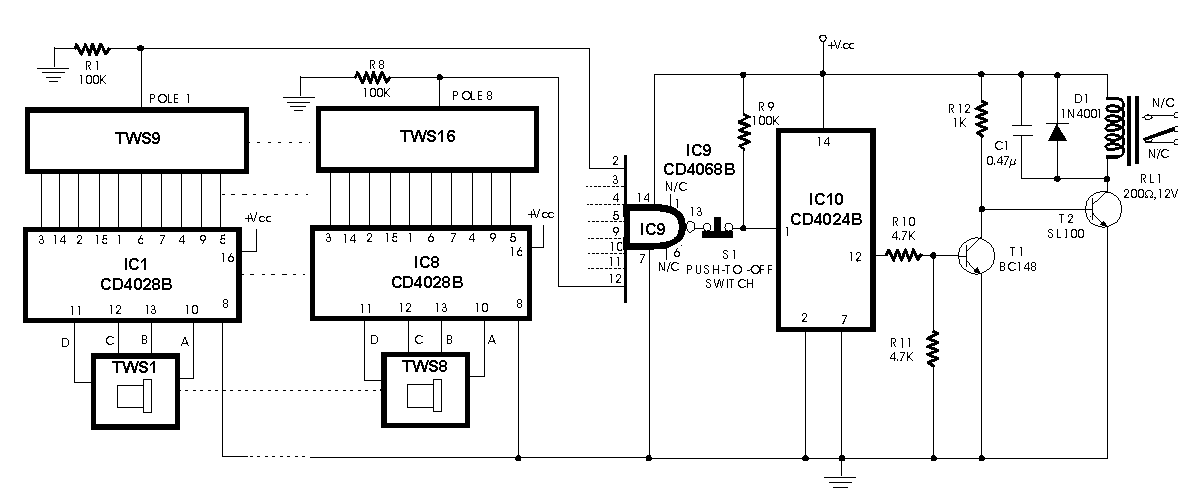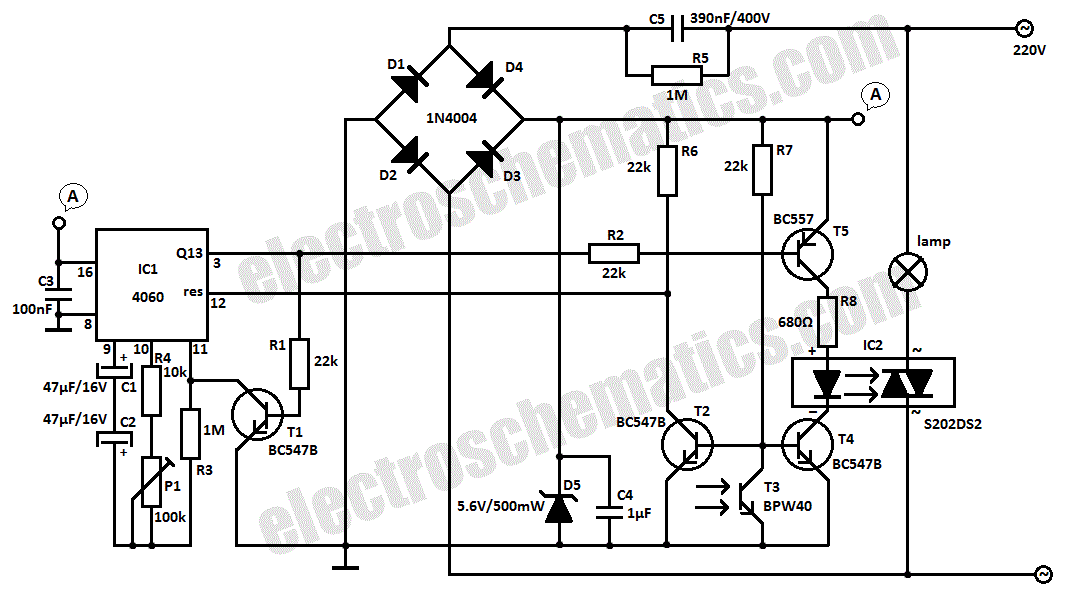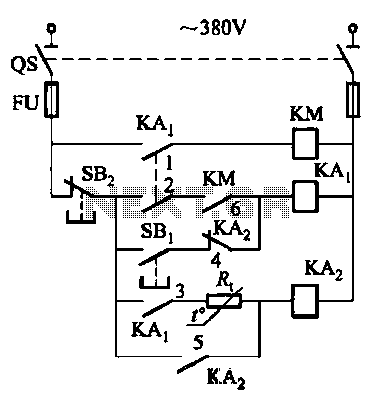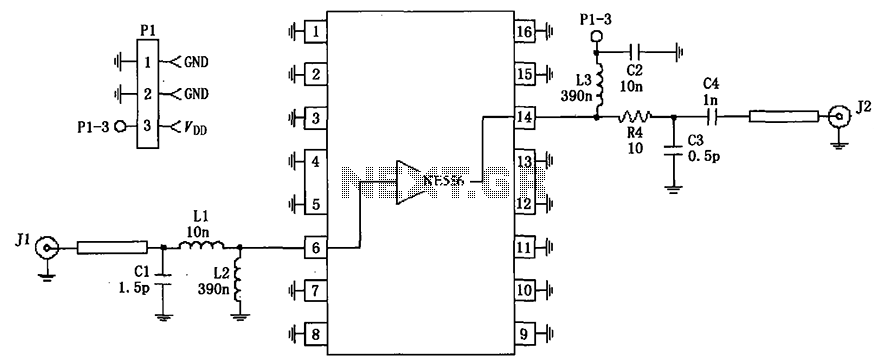
Gasfet Preamp For 435Mhz Circuit
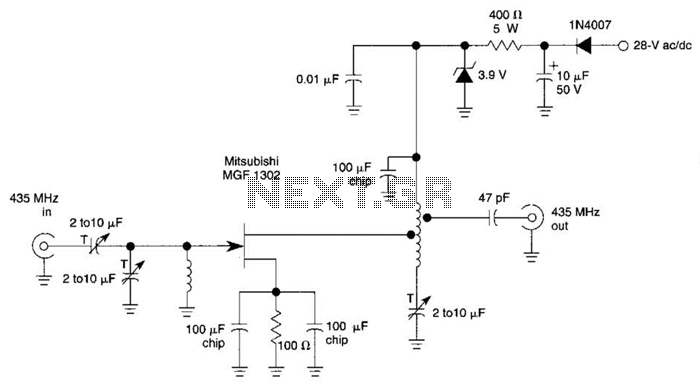
This circuit is a low-noise preamplifier designed for the 435-MHz amateur satellite frequencies. It utilizes a Mitsubishi MGF1302 transistor. A 28-Vdc power source is indicated; however, lower voltages can be employed by adjusting the 400-5-W resistor.
The low-noise preamplifier circuit operates at a frequency of 435 MHz, which is commonly used in amateur satellite communications. The choice of the Mitsubishi MGF1302 transistor is significant due to its low noise figure and high gain characteristics, making it suitable for weak signal amplification in RF applications.
The circuit configuration typically includes input and output coupling capacitors to block DC voltage while allowing AC signals to pass. These capacitors ensure that the preamplifier does not interfere with the DC biasing of subsequent stages in the signal chain. The input impedance of the preamplifier is designed to match the output impedance of the antenna, optimizing power transfer and minimizing signal loss.
Power supply considerations are crucial for the performance of the preamplifier. While a 28-Vdc source is specified, the circuit allows for flexibility in power supply voltage by incorporating a resistor that can be adjusted. This resistor, rated between 400-5 W, provides a means to lower the voltage supplied to the MGF1302, which can be beneficial in reducing power consumption and heat generation in low-power applications.
Additional components such as inductors and capacitors may be included in the design to form tuned circuits for selectivity and stability, ensuring that the preamplifier functions effectively within the desired frequency range without unwanted oscillations or interference. Proper grounding and layout techniques are essential to minimize noise and ensure reliable operation in the challenging RF environment of satellite communications. This circuit is a low-noise preamplifier for the 435-MHz amateur satellite frequencies. The circuit uses a Mitsubishi MGF1302. A 28-Vdc source is shown, although by changing the 400- 5-W resistor lower voltages can be used.
The low-noise preamplifier circuit operates at a frequency of 435 MHz, which is commonly used in amateur satellite communications. The choice of the Mitsubishi MGF1302 transistor is significant due to its low noise figure and high gain characteristics, making it suitable for weak signal amplification in RF applications.
The circuit configuration typically includes input and output coupling capacitors to block DC voltage while allowing AC signals to pass. These capacitors ensure that the preamplifier does not interfere with the DC biasing of subsequent stages in the signal chain. The input impedance of the preamplifier is designed to match the output impedance of the antenna, optimizing power transfer and minimizing signal loss.
Power supply considerations are crucial for the performance of the preamplifier. While a 28-Vdc source is specified, the circuit allows for flexibility in power supply voltage by incorporating a resistor that can be adjusted. This resistor, rated between 400-5 W, provides a means to lower the voltage supplied to the MGF1302, which can be beneficial in reducing power consumption and heat generation in low-power applications.
Additional components such as inductors and capacitors may be included in the design to form tuned circuits for selectivity and stability, ensuring that the preamplifier functions effectively within the desired frequency range without unwanted oscillations or interference. Proper grounding and layout techniques are essential to minimize noise and ensure reliable operation in the challenging RF environment of satellite communications. This circuit is a low-noise preamplifier for the 435-MHz amateur satellite frequencies. The circuit uses a Mitsubishi MGF1302. A 28-Vdc source is shown, although by changing the 400- 5-W resistor lower voltages can be used.
